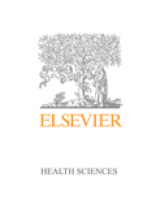This title is directed primarily towards health care professionals outside of the United States. Written by authors with clinical and research experience, this book is intended for midwives and student midwives participating in Diploma, Advanced Diploma and first level degree programmes. It aims to increase research awareness and develop the skills of critical appraisal of research evidence that are essential to evidence based practice.
New to this edition
- New chapter on interviewing as a means of data collection, including information on using focus groups
- New chapter on evidence-based practice including issues around supervision for evidence-based projects
- Inclusion of new material in relation to such topics as undertaking case studies
Key Features
Key features:· Introduces research methods in midwifery· Discusses the application of research to practice and looks at the route from practice to research· Presents both quantitative and qualitative research methods· Provides a framework for the appraisal of midwifery research evidence· New chapters on evidence based research and interviewing in qualitative research· Maternity care related examples used throughout.
Author Information
By Elizabeth R. Cluett, PhD, MSc, RM, RGN, PGCEA, Senior Lecturer in Midwifery, School of Nursing and Midwifery, University of Southampton, Southampton, UK and Rosalind Bluff, PhD, SRN, SCM, MTD, CertEd(FE), Former Lecturer in Midwifery, School of Nursing and Midwifery, University of Southampton, Southampton, UK
Introduction
Chapter 1 From Practice to Research
Chapter 2 Evidence Based Practice
Chapter 3 Experimental Research
Chapter 4 Surveys
Chapter 5 An Introduction to Statistics in Midwifery Research
Chapter 6 Grounded Theory
Chapter 7 Ethnography
Chapter 8 Phenomenology
Chapter 9 Alternative Approaches to Research
Chapter 10 Interviewing in Qualitative Research
Chapter 11 Critiquing the Literature
Chapter 12 From Research to Practice
Glossary
Index
“The book’s layout enables easy access to the material which can be read in its entirety to gain a broad understanding of research, or it can be dipped into for reference purposes.
The book also contains plenty of checklists and midwifery examples to help the reader understand the application of the research concepts described.
This book is appropriately directed at midwives and students studying at undergraduate level. The content makes it a useful resource for students, teachers and researchers at all levels of experience, particularly if they are looking to refresh knowledge and understanding of research methods that are less familiar to them.
Head of the Centre for Nursing and Midwifery Research
The Practicing Midwife / Volume 10 / Number 7 / July-August 2007




